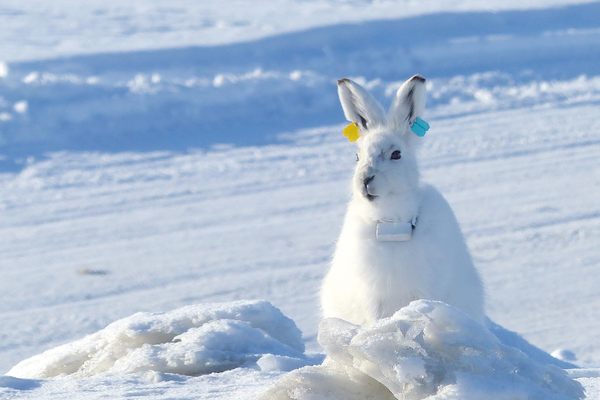Tiny Dragonflies Travel Hundreds of Miles, to Mate and Then Die
One generation commutes one way, the next comes back.

You’re a green darner dragonfly. One day in March, you emerge in a Florida pond. You join sizable ranks. Your kin are one of the most common dragonfly species in North America, but you won’t have much time to get to know each other. You’ll all be dead within weeks.
But you’re going to make them count with an epic journey. Your three-inch wingspan will carry you hundreds of miles—over roughly 55 days, depending on the winds. You might stop along the way to rest before you reach Vermont, Maine, or maybe even Canada. You may have mated en route, and you’ll do it soon after you land. Then you’ll die. You’ll never make it back to your hatching grounds, but your offspring will, by migrating back in the other direction. That pattern will repeat for generations: hatch, migrate, mate, die.
Scientists have long known that some insect species make annual migrations over long distances, and that green darner dragonflies are among them. Until recently, though, they didn’t know much about what the route looks like, how long it takes, or what the insects’ annual cycle is like. In a new paper in Biology Letters, researchers from the Migratory Bird Center at the Smithsonian Conservation Biology Institute; University of Maryland, Baltimore County; and Vermont Center for Ecostudies describe the dragonfly’s big trip.
To gather data, researchers mined specimens in museum collections and years of citizen science data about when and where dragonflies emerged. The team sampled stable hydrogen isotopes from 852 wings of specimens in more than 15 public and private collections across eastern North America, from Florida to Ottawa. “When the larvae crawl out of the water and the adult emerges leaving the skin behind, it opens the new wings and they dry before flight,” writes coauthor Kent McFarland, a conservation biologist at the Vermont Center for Ecostudies, in an email. “The wings no longer grow, so the chemistry found in them is locked there.” The hydrogen isotopes are a reliable indicator of the insects’ starting points—latitude, at least, but nothing so specific as a particular pond, says Michael Hallworth, a postdoctoral fellow at the Smithsonian Migratory Bird Center and the paper’s lead author. Citizen science data then provides some additional clues.

It’s possible to get more specific details, at least on a small scale. In 2012, another group of researchers led by Martin Wikelski, then an ornithologist at Princeton, fastened radio transmitters to 14 green darners and tracked them over 12 days of their autumn migration (which goes from north to south). That team found that the insects migrated exclusively during the day, and only when winds blew at less than 15 miles per hour.
With a larger-scale survey—an enormous undertaking—it could be possible to learn more. There’s much to investigate, says Colin Studds, a coauthor and ecologist at the University of Maryland, Baltimore County. Some of the winged insects could be traveling as far south as Jamaica, he says—he’s found them there—but it’s not yet clear how fast they fly, how often they stop, or how many survive the trip.
Based on the new research, scientists now believe that the green darners are made up of at least three cohorts: one born in the south that migrates north in the spring, another born in the north that migrates south in the fall, and a third generation born in the south that sticks around and sends its progeny north the following spring. But this pattern is susceptible to change in a warming world. Right now, the researchers notice the migration beginning when temperatures are around 50 degrees Fahrenheit. “As the average temperature is getting warmer, migrations could get shorter,” Studds says. Eventually, if dragonflies can breed all year long across their range, he adds, “those migrations could disappear altogether.”





















Follow us on Twitter to get the latest on the world's hidden wonders.
Like us on Facebook to get the latest on the world's hidden wonders.
Follow us on Twitter Like us on Facebook